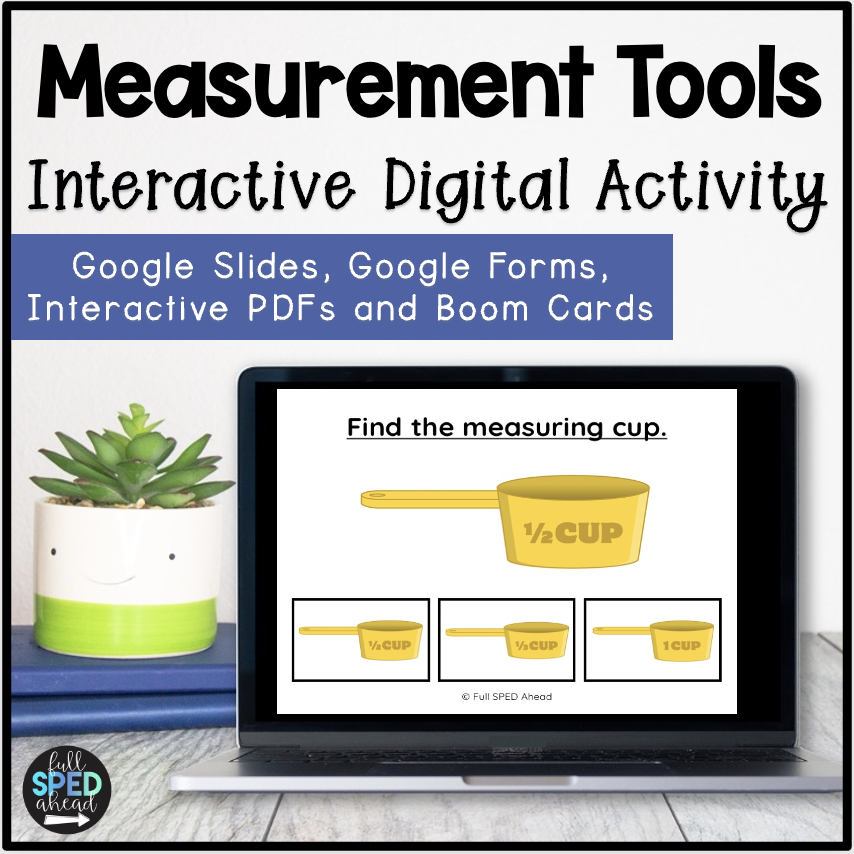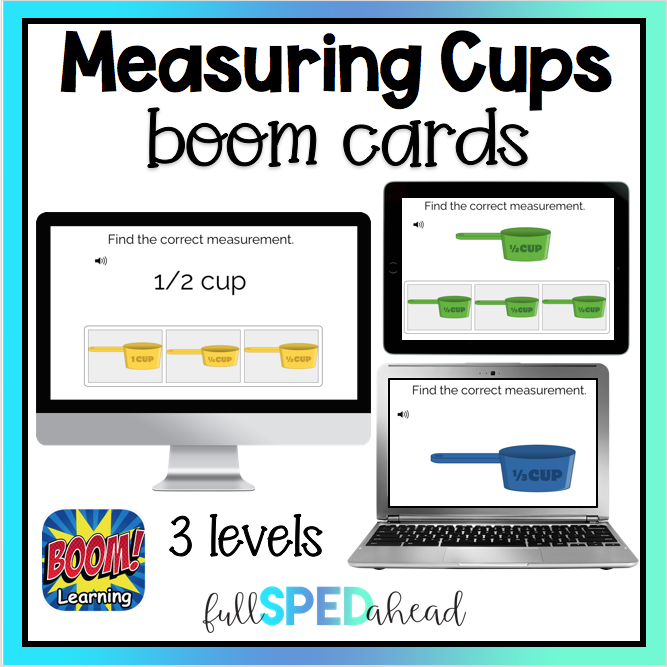Raise your hand if you have to teach your students fractions! Yep, me too! Now, raise your hand if you have no idea how your students will learn fractions…yep! I teach my students using measurement tools in cooking and in every day life!

As a middle school teacher, I am responsible for teaching my students. Yes, even in special education we’re working as closely as we can with grade level standards. In Illinois, we use the Essential Elements which is modified state standards. These help my students access the curriculum better, but can still be tough.
Students can have a difficult time reading labels, but with more practice, they can get the hang of it!
Are you looking to help your students continue to build these skills? This resource bundle I have created includes Interactive PDFs, Boom Cards, Google Slides and Google Forms. This is a growing bundle, since there are so many measurement tools that help teach this skill!
If you are not a Google user, you can also check out these individual Boom Learning™ decks to work on measurement tools as well!

Teaching fractions can be a challenging concept, but incorporating hands-on and visual learning experiences can greatly enhance comprehension, especially for students in special education. Measuring tools provide an excellent opportunity to introduce this concept in a concrete and meaningful way. By using measuring tools such as rulers, tape measures, and measuring cups, teachers can engage students in interactive activities that promote understanding and application of fractions. In this blog post, we will explore various strategies and practical ideas for using measuring tools to teach fractions in a special education classroom.

Make sure to grab this FREE set below! I know you’ll love it and it’ll be perfect for your students!
4. Comparing Fractions: Utilize measuring tools to compare them and reinforce the concept of greater than, less than, or equal to. Provide different objects or lines of different lengths and ask students to compare their fractional values using the measuring tools. For example, ask students to determine if one-third is greater or less than one-fourth based on the lengths they measure.
5. Games and Activities: Engage students in fun and interactive games or activities that involve measuring tools and fractions. Create fraction bingo games, where students have to identify and mark fractional lengths on rulers or tape measures. Use fraction manipulatives, such as fraction tiles or fraction circles, in hands-on activities where students can physically explore and compare fractions using measuring tools.

Measuring tools offer an engaging and practical way to teach fractions to students in special education. By incorporating hands-on experiences and visual representations, students can develop a deeper understanding and their applications in real-world contexts. Through measuring length and capacity, comparing, and participating in interactive games and activities, students can strengthen their skills while also enhancing their problem-solving, critical thinking, and mathematical reasoning abilities. By utilizing these strategies and incorporating measuring tools, special education teachers can create an inclusive and effective learning environment that supports students’ fraction comprehension and overall mathematical growth.
Instagram | TeachersPayTeachers | Facebook | Boom Learning Library |
Learn more about math skills here!
What are you looking for?
COPYRIGHT © 2025 Full SPED Ahead